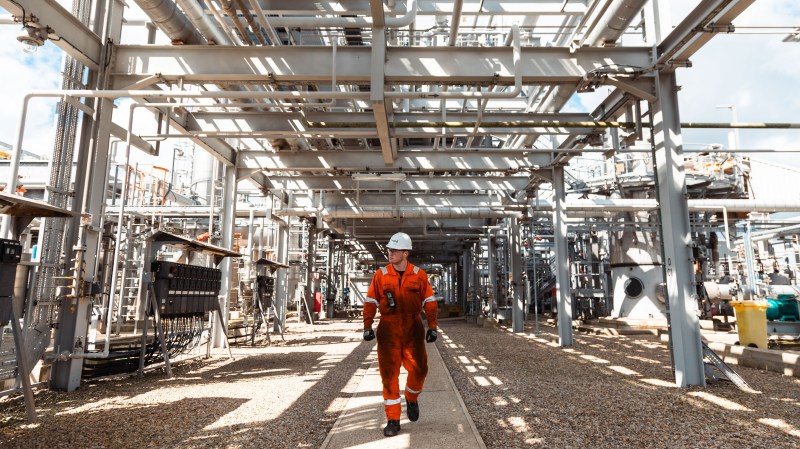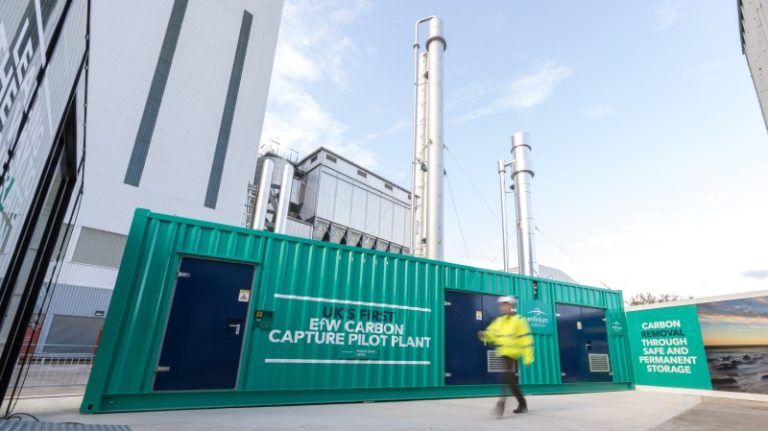The case for ‘blue hydrogen’ heats up on the road to net zero
On any given day, about a quarter of the gas that will be used to power the UK flows silently through a single 3ft-wide pipeline on Teesside. The terminal of the Central Area Transmission System can receive about 40 per cent of the natural gas produced in the North Sea, which is then treated and fed into the national transmission network.
It also helps to sustain a nearby chemicals complex, the second largest in Europe by manufacturing capacity, and other local heavy industries. Collectively they belch out up to 4.5 million tonnes of carbon dioxide a year, making the Tees Valley one of the most heavily polluting industrial regions in Britain.
However, the site may have a much greener, not to say bluer, future. Kellas Midstream, which owns the terminal, thinks its proximity to industry, as well as a proposed pipeline that would transport captured carbon back out to the North Sea to be stored underground, puts it in pole position to provide an alternative energy source to unabated natural gas.
Its H2NorthEast joint venture with SSE, the energy group, is aiming to produce a gigawatt of hydrogen by the start of the next decade, enough to power a million homes and representing 10 per cent of a 10GW target set by the previous government to be achieved by 2030.
The benefit of hydrogen is that it does not emit carbon dioxide when burnt. H2NorthEast, a so-called blue hydrogen project, would split natural gas into hydrogen and CO₂. The latter gas would be fed into the East Coast Cluster, which would capture emissions from the Teesside and Humber regions and store them in the Endurance saline aquifer below the North Sea. The transport and storage infrastructure is operated by the Northern Endurance Partnership, a joint venture between BP, Equinor and TotalEnergies.
The cluster is one of two selected by the previous government for the first wave of development of carbon capture and storage in Britain, a nascent technology proposed as a way of decarbonising high-polluting industries.

“If you have the feed gas, if you have access to a CO₂ store, if you have industrial consumers that are currently using natural gas but would be willing to switch to hydrogen in the proximity of your facilities, then you begin to build up a pretty robust picture,” Nathan Morgan, 47, the chief executive of Kellas Midstream, said.
Despite the hype around hydrogen in recent years, existing low-carbon projects in Britain are either in the pilot or planning stages. They include “green” hydrogen, made by splitting water via electrolysis to produce hydrogen and oxygen. Projects will not come to fruition in any significant way until the end of the decade, according to forecasts by Aurora, an energy consultancy.
Cost is one issue, particularly at a time when a new government has taken charge, despite Labour having made positive noises around hydrogen production. There are two forms of government support to bridge the price gap between natural gas and hydrogen. The assistance will work in a similar way to the contracts-for-difference regime that provides support to renewable generators such as offshore wind and onshore solar farms.
Eleven green hydrogen projects, with a combined capacity of only 125 megawatts, were awarded contracts last year that guarantee a certain price for their product over 15 years, with a second round due soon. The average price agreed was £241 per megawatt hour, which compared with an average wholesale gas price of £74 per MWh at the end of March, according to estimates by Cornwall Insights, another consultancy.
For projects hoping to use carbon capture and storage technology, funding of £20 billion was made available by the previous government under its cluster sequencing programme. Two blue hydrogen projects, H2 Teesside and Vertex, have been selected under the programme, promising a combined capacity of 4.5GW by the end of the decade. H2NorthEast is hoping to bid in a promised expansion of this process to select further emitters, which had been expected at the end of last year.
The guaranteed prices for blue hydrogen projects, which are expected to be confirmed by the government in next month’s budget, are anticipated to be lower than those under the green hydrogen contracts.
“On a relative basis at this point in time, blue hydrogen will be more competitive than green hydrogen,” Morgan said, adding that it was too early to put a number on what the cost of hydrogen production at H2NorthEast might be. “In all of these nascent technologies, and if you look back at solar and wind, they were all the same. They all require some form of government support initially.”
He pointed to the dramatic reduction in the clearing prices secured under contracts awarded to other types of green energy projects. The latest average clearing price for offshore wind had more than halved compared with the first allocation round in 2015.
The Department for Energy Security and Net Zero said: “Hydrogen will play an important role in our mission to become a clean energy superpower and create good jobs right across the country. Our national wealth fund will invest directly in hydrogen to make the UK a world leader in this technology of the future.”

H2NorthEast is still in the engineering design stage. Its developers had planned to take a final investment decision next year and are hopeful that they can start committing capital in earnest within the next two years. The cost of reaching capacity of 1GW is estimated at £2 billion, but the project will create an extra 100 jobs once operational. The venture has early agreements with potential customers in heavy industry and power generation.
However, projects such as H2NorthEast come at a time when the North Sea faces increasing challenges as producers threaten to reduce their production in the face of windfall levies that have increased the headline rate of taxation to 78 per cent.
There are also questions about how environmentally friendly the production of blue hydrogen truly is, considering the upstream emissions associated with producing natural gas. Natural gas should be seen as a transition fuel as Britain attempts move towards net zero, Morgan said. “It’s not at this point feasible, for cost reasons [and] for technological reasons to say, ‘We just want everything to be green hydrogen.’ I think blue is a necessary step.
“If I look at gas specifically, the need for it, in terms of backing up renewables, in terms of providing feedstock to blue hydrogen, I do think that needs to be thought about very carefully. We will need gas.”






